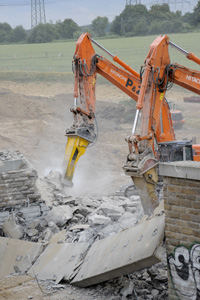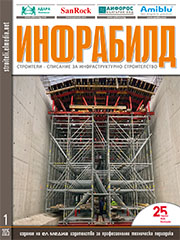Atlas Copco hydraulic breakers have been used to demolish a bridge on main arterial route in the Ruhr
02.08.2011

Two heavy Atlas Copco hydraulic breakers have been used to demolish a bridge on the A40 motorway at Junction 28 in Gelsenkirchen-Süd, Germany. The bridge was used to carry the four lanes of the A40 over the B277 main road. As the most important arterial route in the Ruhr, the A40 is being widened to incorporate six lanes, so the old bridge needed to be demolished.
Viersen-based Prangenberg & Zaum had only two days to complete the demolition, commissioned by Strabag AG Köln.
The company chose heavy-duty Atlas Copco hydraulic breakers for demolition work: a HB 7000 with a service weight of 7 tons, a HB 5800 weighing 5.8 tons and a HB 2500 weighing 2.5 tons. The solid reinforced concrete bridge and bridge heads were removed in about 32 hours. A pulveriser crushed the demolition waste while it was still on site and the waste was then transferred to Prangenberg & Zaum’s recycling station for further processing. The total volume of the demolition project was 2,300 cubic metres of concrete with steel reinforcement.
“The work went off without a hitch. Our Atlas Copco hydraulic breakers worked as reliably as they always do,” declares Holger Schmidt, Site Manager at Prangenberg & Zaum. “We are very pleased with a total of eight Atlas Copco breakers among our machinery. They never let us down, particularly on construction sites with tight deadline constraints.”
The A40 runs from Straelen on the Dutch border, over the Rhine and across the Ruhr region to Dortmund and is the main arterial road in the Ruhr. Around 120,000 vehicles a day are recorded travelling around the city of Bochum at peak times, meaning the A40 is the most used motorway in the Ruhr region. Work on gradually widening the motorway to six lanes was begun in 2010 and should be completed in 2012.








